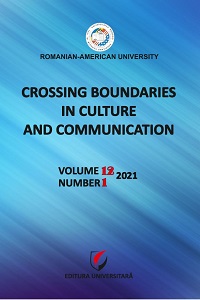The Teaching of Spanish as a Second Language and Spanish for Specific Purposes: Sociolinguistic and Variationist Perspectives
The Teaching of Spanish as a Second Language and Spanish for Specific Purposes: Sociolinguistic and Variationist Perspectives
Author(s): Victor-Emanuel CiuciucSubject(s): Language and Literature Studies, Education, Foreign languages learning, Sociolinguistics, Educational Psychology
Published by: Editura Pro Universitaria
Keywords: SSP (Spanish for Specific Purposes); Second Language Acquisition; Teaching Spanish as a Foreign Language; Sociolinguistics; Linguistic Variation;
Summary/Abstract: Since the teaching of Spanish as a foreign language makes us feel in constant change as the dynamics in our globalized world are also in constant change, we can have the same, even more enhanced, feeling when it comes to the teaching / learning of Spanish for specific purposes, because the same evolution in research makes this subjacent teaching context an exciting task. We already know that the teaching / learning of a language, according to J. Sánchez Lobato and I. Santos Gallargo (2004: 11) is a “processual, complex and multidisciplinary” phenomenon, but we want to investigate whether we could consider specialty language learning under the same principles. This article’s cornerstone is that teaching Spanish for specific purposes is a type of teaching with great potential. We rely on the fact that the needs of current learners have evolved, that is, they have more practical objectives for language learning as it can ease or even upgrade their professional situation. Moreover, in the case of Spanish students from the world of social sciences, economics, or even construction and engineering, they want their knowledge of language and specialized vocabulary in Spanish to singularize them, acting therefore as a differentiator from their fellows. Consequently, their becoming specialists in Spanish for architecture and construction is a means to an end, driven by a professional development motivation, with a significant linguistic counterpart.
Journal: Crossing Boundaries in Culture and Communication
- Issue Year: 12/2021
- Issue No: 1
- Page Range: 117-131
- Page Count: 15
- Language: English

